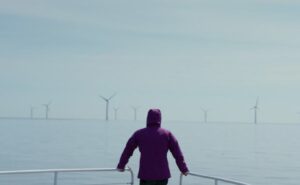The Australian government appears to have made a remarkable concession following the release of the 100% renewables report by the country’s energy market operator – a renewables future will be no more costly than the largely fossil fuel alternative.
As we reported earlier this month, after the release of the Australian Energy Market Operator’s 100% renewables scenario, the estimated wholesale cost of electricity from a system based largely around wind, solar, geothermal and biomass would cost around $110/MWh and $130/MWh between 2030 and 2050 – depending on the speed of that transition.
A “community summary” posted on the Department of Climate Change website, highlights the fact that the various scenarios painted by Treasury, the CSIRO, the UNSW, and now the AEMO modeling suggests that wholesale prices – whatever the scenario – will fall in a generally narrow range of around $100/MWh to $130/MWh in 2030, and $110/MWh to $150/MWh in 2050.
Here is the relevant piece from the document:
A number of other studies have looked at generation and wholesale electricity prices in 2030 and 2050: the Treasury’s Strong Growth Low Pollution (SGLP) modelling from September 2011, the CSIRO’s eFuture modelling tool, and the University of New South Wales’ least cost 100 per cent renewable electricity scenarios in the Australian NEM study.
Importantly, each model has a specific purpose and each has significantly different assumptions, methodologies and cost inputs. Furthermore, each model emphasises different aspects of the electricity system and simplifies others according to purpose. For example, the study’s cost numbers are based on a total revenue requirement (average costs) while others (such as CSRIO) are marginal costs. Average costs are likely to be lower than marginal costs.
As a result, differences in the models, the exclusion of some costs and the framework which does not build the system incrementally means that is it not possible to accurately predict the quantum of additional costs that would result from any new policies to achieve 100 per cent renewable energy.
Nonetheless, despite the differences between the modelling exercises, indicative wholesale electricity prices generally fall within a reasonably narrow range of around 100 – 130 dollars per MWh in 2030 and around 110 – 150 dollars per MWh in 2050.
So it seems that Canberra bureaucrats, if not the politicians, are conceding that there is little difference in costs between the relatively modest climate and clean energy goals proposed by the current government, and the more ambitious targets proposed by The Greens, and environmental groups.
This should not be a surprise to anyone who has properly considered the costs of new generation – as ACT minister Simon Corbell has – and their likely progress in coming years. Wind, and then solar, clearly offer the cheapest options.
New coal and gas plants will be priced out of the market, an important consideration when taking into account that most current generation needs to be replaced in coming decades. (Some pro-nuclear web-sites and commentators like to say that nuclear energy will be within the same cost bracket, but that is only if the cost of capital is ignored.)
The consideration of future costs is a crucial point in the current federal political debate, where policies such as high emission reduction targets and high renewables scenarios – as proposed by The Greens – are seen as reckless, dangerous, marginal or fringe policies.
The frustration is that while such targets form part of the mainstream policy discussion in most other countries, each of the big parties in Australia are as keen as the other to put as much distance between themselves and the Greens. So while most other countries debate how quickly they should be moving to decarbonise the economy, the overall theme in Australia is how slowly it should be done.
The common reason for this is cited as cost to the consumer, but the reality is that the cost to consumer is no greater in these ambitious scenarios than it is under the more modest transitions modeled by Treasury. And if other environmental costs are included, such as the health impacts of fossil fuels, then the numbers change again.
As Corbell (he’s from the Labor Party) noted in his interview with RenewEconomy this week, a 90 per cent renewables target would cost no more to consumers if tied in with energy efficiency and other measures. It’s a shame that no other politician from a mainstream party is talking in those terms on a national scale.
As Corbell noted, the real push back comes from incumbent generators and vested interests, because it is they who face lower revenues and profits – which is why their industrial lobby groups are calling for a dilution of Australia’s relatively modest 20 per cent renewable energy target by 2020 (in the case of the generators), or for climate policy to be completely re-evaluated (in the case of the Business Council of Australia).
Both strategies are focused on creating further delay in the inevitable transition to a low-carbon economy. Unions and environmental groups operating under The Southern Cross Climate Coalition today released a policy platform that stressed that environmental policies can be directly linked to employment growth and economic expansion.
It says that low-carbon and energy productive technologies and practices are essential for maintaining and growing jobs, and this applies as much to traditional industries as it does to innovate industries of the future.
Despite efforts by some media to bring climate change to the forefront – as witnessed by the SMH editorial today – such pleas are likely to fall on deaf ears in the current campaign.
Neither Treasurer Chris Bowen nor Opposition spokesman Joe Hockey mentioned climate change or a clean energy transition in their hour-long debate on Monday, focusing instead on an absurd argument about revenue and budget forecasts in forward estimates – a complete irrelevance to everyday Australians and the major issues confronting the country.








